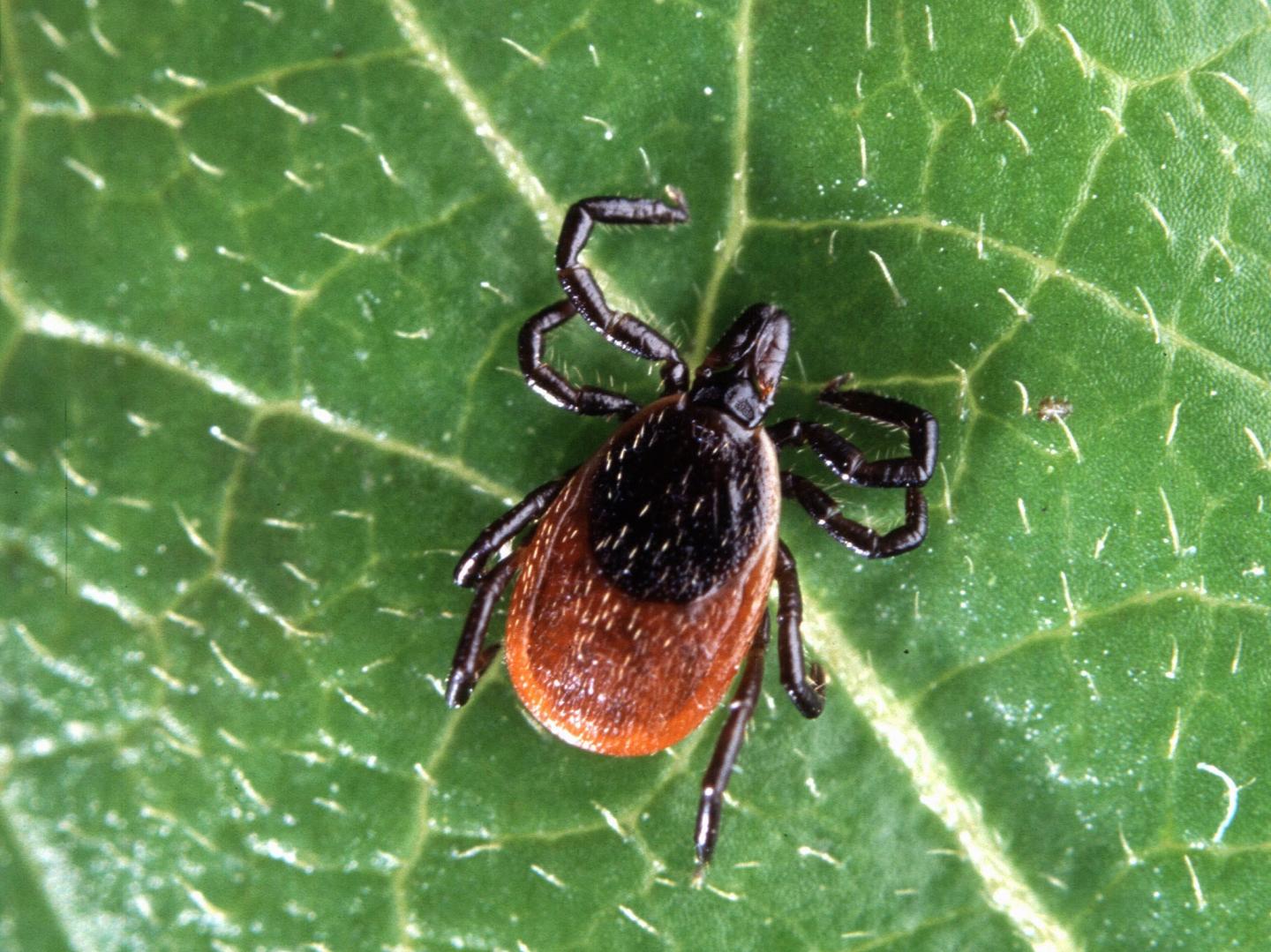
Credit: Image courtesy USDA ARS
BLOOMINGTON, Ind. — A new environmental monitoring project at Indiana University has found increased numbers of the ticks that carry Lyme disease in Southern Indiana.
The organisms, deer ticks, are not yet confirmed to carry Lyme disease. However, IU researchers said the presence of a known disease vector — like a deer tick — is commonly followed by a rise in the illness caused by the bacteria it carries.
The detection arises from a newly launched project from the IU Environmental Resilience Institute and the Prepared for Environmental Change Grand Challenge to understand and guard against disease-carrying organisms in the state. Project Vector Shield will regularly collect ticks and mosquitoes on the state's southern, eastern and western borders and analyze them to see if they carry diseases that are dangerous to people.
The project's launch comes at the same time as a recent report from the Centers for Disease Control and Prevention finding that the transmission of diseases from ticks, mosquitoes and fleas has tripled since 2004, including the detection or discovery of nine diseases never previously seen in the U.S.
"Changes in climate, temperature and weather conditions, as well as human activities such as international travel, all contribute to the movement of disease vectors into a new region," said IU Distinguished Professor of Biology Keith Clay, a leader on Project Vector Shield. "But the only way to quickly detect new species or diseases entering an area is regular, long-term data collection, which is rare. There really isn't anyone else conducting this sort of sustained, state-level monitoring project."
Deer ticks — also known as "blacklegged ticks" — do not currently appear in Southern or Central Indiana on CDC maps. But Project Vector Shield's data suggests this "safe zone" may be much smaller than previously thought — or nonexistent.
Although the project is not officially associated with Indiana state government, Clay added that the project's leaders hope it will provide valuable information to public-policy makers, researchers and citizens on protecting against new disease threats.
The project's 20 collection sites are primarily located in state parks, forests and wildlife areas near Indiana's eastern border with Ohio, the southern border along the Ohio River and the western border along the Wabash River. The sites are split between rural regions and urban, suburban and exurban areas where the risk of human exposure to ticks and mosquitoes is greatest.
The first tick collections were conducted in April. Other collections — as well as mosquito collections later in the season — will occur at each location five to six times per year between spring and fall for the next four years. The effort will focus on Indiana's southern region, since most new diseases entering the state come from the south due to rising global temperatures. The tropical mosquito species that carries the Zika virus, for example, was first detected in the Midwest in 2016.
"A vector-borne disease can't arrive in a region until its vector arrives, especially since there isn't much overlap between the illnesses carried by different vector species," Clay said. "Our goal is to analyze ticks and mosquitos for species that previously did not occur — or were less common — in Indiana so people are able to take the appropriate precautions."
Over the past 20 years, Indiana has seen the rapid expansion of another major disease carrier, the lone star tick, which transmits a bacterial infection that causes the illness ehrlichiosis and whose bite can cause a severe allergic reaction to red meat. The Gulf Coast tick, a newer, rising threat that carries a pathogen causing Tidewater Fever, has recently become established in Tennessee and Maryland.
"If the Gulf Coast tick is as aggressive and fast-moving as the lone star tick, it's just a matter of time before it enters Indiana," said Clay. "The biggest difference between these diseases and some other tick-borne illnesses is their threat to human life. Lyme disease can make you miserable, but it won't kill you."
Project Vector Shield is a part of the IU Environmental Resilience Institute's broader interest in "movement ecology," or the study of how organisms like insects, birds and plants move across the environment. Tracking these changes over time can reveal long-term changes in the environment — and provide an early warning system for threats like invasive species and vector-borne disease.
###
The IU Environmental Resilience Institute is supported by IU's Prepared for Environmental Change Grand Challenge, which brings together a broad, bipartisan coalition of government, business, nonprofit and community leaders to help Indiana better prepare for the challenges that environmental change brings to our economy, health and livelihood. Announced in May 2017, it is the second initiative to be funded as part of the IU Grand Challenges program.
Media Contact
Kevin Fryling
[email protected]
812-856-2988
@IUScienceNews
http://newsinfo.iu.edu
Original Source
https://news.iu.edu/stories/2018/05/iub/releases/24-bug-borne-disease-monitoring-project-finds-deer-ticks-on-the-rise-in-indiana.html





